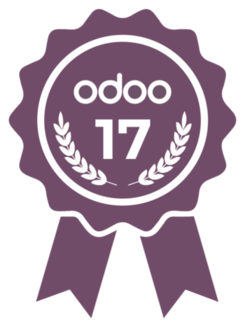GOMA, Avenue DES RONDS POINTS N° 142
Nord Kivu Goma
刚果民主共和国

VIRUNGA FOUNDATION
In regions home to exceptional biodiversity but which are weakened by structural deficiencies in State governance, chronic insecurity, underdevelopment and low-income levels, protected areas can provide a remarkably high return on investment, accelerating development and improving stabilisation. They can be solid foundational poles that improve the living conditions of local populations and their long-term development prospects by strengthening the rule of law and civil peace or by helping to create the conditions necessary for socio-economic development2.
The Virunga National Park (VNP), which extends over 8,000 km2 in the province of North Kivu, eastern DRC, is one of the most telling examples of this value proposition. The oldest park in Africa, set to celebrate its 100th anniversary next year, is home to around 50% of Africa’s terrestrial species. It is also one of the national parks with the highest demographic pressure around its border, second only to the Nairobi National Park. Populations around the national park have known conflict and displacement for decades following the 1994 Rwandan genocide. Several estimates indicate that around 6.1 Million people in the Democratic Republic of the Congo (DRC) are internally displaced3.
The Virunga Alliance shares a unified vision: preserving the VNP through sustainable development to benefit local communities and peace in the region. Formulated for the first time in 2013, the Virunga Alliance brings together public authorities, civil society and the private sector to use the park's ecosystems as a force multiplier for development and stabilisation in North Kivu. The alliance's objectives are based on three pillars:
- tourism
- renewable energy
- agricultural transformation
These objectives are interdependent and equally important because the success of one is essential to the success of the others. The Virunga Alliance is pursuing a program of economic transformation. It is putting in place the conditions to create jobs and increase incomes. The prominent accelerators are energy production, road construction, technical support for the agricultural sector, support for entrepreneurs and ongoing efforts to improve governance. Ultimately, the Virunga Alliance aims to fully restore Virunga’s ecosystems, generate one million tons a year of agricultural transformation and create 100,000 jobs by 2040.
Energy production, expansion of the distribution network and electricity sales increased in 2023. These activities are managed by Virunga Energies (VE) - a part of the Virunga Alliance.
By the end of the year, VE supplied 24,922 domestic connections and 1,270 small and medium-sized enterprises (SME) connections through their network. Thirty-two different social infrastructures benefit from free electricity. Access to a stable energy source has significantly impacted hospitals and health centres (particularly for storing medicines and providing services 24 hours a day, 7 days a week).
Green energy is an essential tool for developing green economic activities: entrepreneurs feel confident to invest when energy and water supplies are stable with predictable prices, which is not a given in the region. Furthermore, access to affordable credit and start-up capital drives entrepreneurship. The Virunga Alliance offers packages as the incubator to start a business. The number of jobs currently created directly and indirectly by Virunga in the green economy numbers 11,275 by creating industrial zones, giving low-interest credit to SMEs paid back on energy bills and supporting women’s empowerment in the workforce.
SMEs in the region often cannot obtain funds through traditional banks due to high-interest rates and the need for extensive collateral before being eligible for a loan. Virunga Investments offers small and medium businesses loans at low interest rates to boost economic activities. Customers pay off their loans through energy bills while keeping prices per kWatt around half what a traditional generator costs. This “pay as you go” model allows a business to repay its loan at the same rate as the growth of its activities.
Since the start of the loan program in 2019, $4.6M has been distributed among 3,000 customers and has kept the rate at which businesses default on their loans under 8%, despite the region’s current security crisis. This action directly resulted in creating 17,250 jobs; in other words, around 7.5 jobs per $2,000 invested.
One factor remains to ensure sustainable development in the region: the digital divide.
The digital divide significantly impacts global inequality by creating disparities between those with access to modern information and communication technologies (ICT) and those without. Not only are businesses struggling to compete on the global playfield because they miss out on the efficiencies afforded by the digital revolution. Individuals, communities, and even entire countries are hindered in their ability to participate in the digital economy, access educational resources, obtain critical health information and engage in the broader social and political discourse. The divide is not only caused by the availability of computers and connectivity to the internet but also by the need for digital literacy. As technology rapidly advances, the gap widens, leaving behind those who need more resources to keep up. This perpetuates cycles of poverty and inequality as access to technology becomes increasingly crucial for economic development, educational opportunities, and social inclusion.

